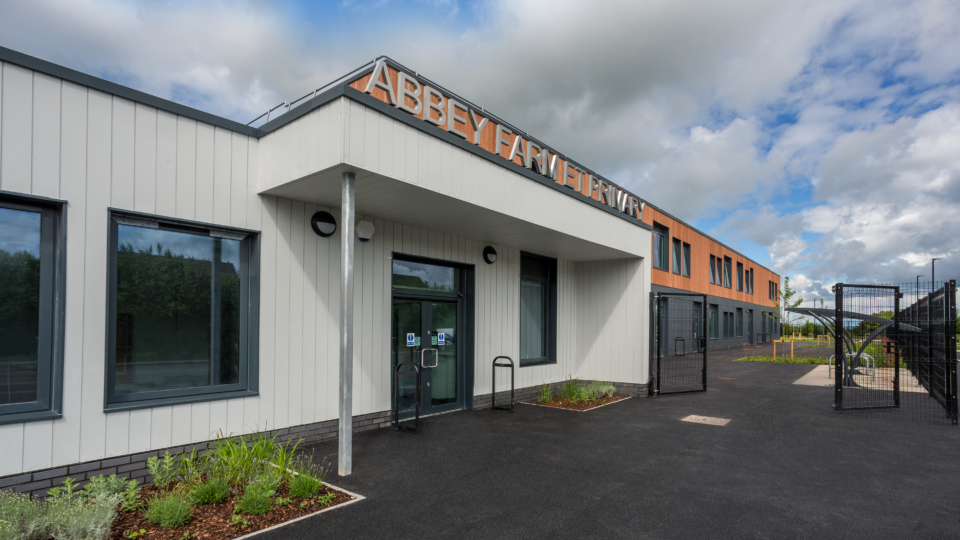
Design ID provided Civil and Structural Engineering Services for Abbey Farm Primary School from the end of RIBA Stage 2 through to RIBA Stages 6 and 7. This involvement allowed for a seamless transition from the design development phase through to construction and completion.
Abbey Farm Primary School is located in the heart of a new residential-led development in Swindon. With sustainability set within the core of this project, Abbey Farm was designed to achieve net-zero carbon in operation ahead of the Department for Education’s Sustainability Output Specification (S21) official launch. With its unique modular design, an efficient construction process began in May 2021, and the school was open in summer 2022, ready to welcome 460 students through its doors in September from the local community.
Design ID were responsible for the planning and delivery of a large car park that spans the site, accommodating the needs of staff, parents, and visitors while ensuring smooth functionality. Additionally, Design ID completed external highway improvement design works, ensuring that both vehicular and pedestrian entrances were safe, compliant, and fit for purpose.
The DID team conducted a comprehensive flood risk assessment, evaluating site constraints, ground conditions, and flood risks, as well as the suitability of Sustainable Drainage Systems (SuDS) for the development. This thorough evaluation ensured effective flood risk mitigation and supported sustainable water management practices. Additionally, it identified the need for a tailored drainage strategy to address the site’s unique requirements.
In response, Design ID developed and implemented an innovative sustainable drainage strategy to maximise a safe and innovative learning environment. This strategy incorporated various SuDS components, such as porous paving, rain gardens, and filter drains. By carefully designing the site levels to direct water flows towards these features, the team optimised the site’s potential, effectively managing surface runoff and enhancing water quality.
In addition to these environmental benefits, the wildflower rain garden offers biodiversity as well as educational spaces where children can observe natural habitats and help them to understand the importance of the water cycle within urban environments. This hands-on experience fosters an early appreciation for sustainability and the role of nature in our cities.
Given the highly permeable geology of the area, we designed and implemented a soakaway system to manage surface water effectively. This system facilitates the natural infiltration of rainwater into the ground, ensuring that 100% of surface water generated on-site is efficiently absorbed and discharged. By utilising this approach, the system reduces surface water runoff, minimises the risk of localised flooding, and supports sustainable drainage practices by replenishing groundwater levels. This solution was tailored to align with the site’s geological conditions, demonstrating an environmentally responsible and efficient method of water management.
Client: Reds10
Architect: HLM Architects
Photographer: Pippa Tanko - pippatankobranding.com







